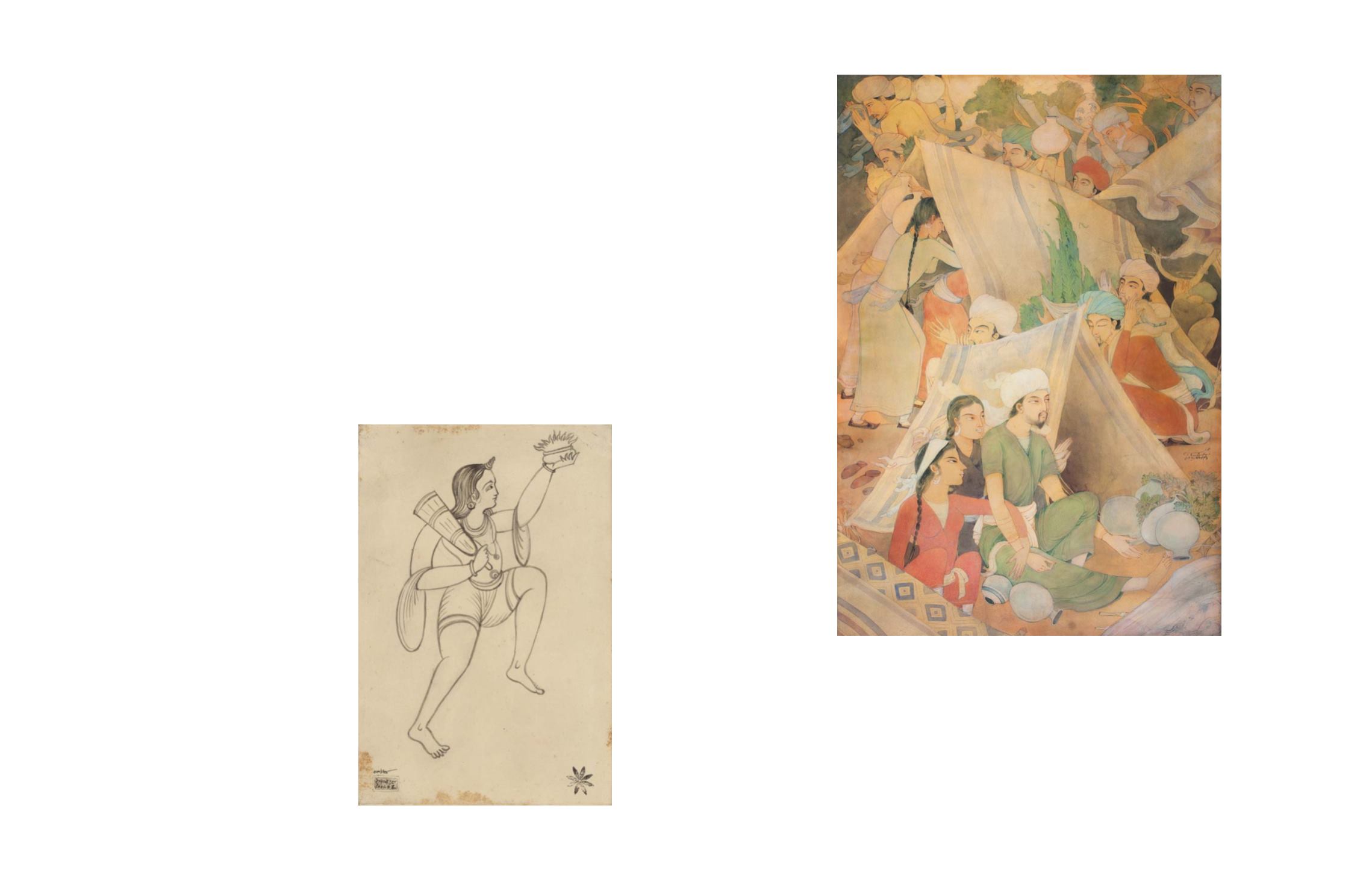

72
73
39
RAMGOPAL VIJAIVARGIYA
(1905 ‒ 2003)
Untitled
Signed in Urdu (centre right)
Gouache and watercolour wash on handmade paper
40 x 27 in (101.6 x 68.6 cm)
Rs 15,00,000 ‒ 20,00,000
$ 22,390 ‒ 29,855
PROVENANCE:
Acquired from the artists’s great
grandson, Kolkata
Private Collection, New Delhi
38
SAILOZ MUKHERJEA
(1907 ‒ 1960)
Untitled
Signed 'SAILOZ' (lower left); signed and
inscribed in Bengali (lower left)
Ink on paper
9.25 x 6.5 in (23.7 x 16.7 cm)
Rs 1,50,000 ‒ 2,50,000
$ 2,240 ‒ 3,735
NON-EXPORTABLE NATIONAL ART TREASURE
PROVENANCE:
Acquired directly from the artist
Dhoomimal Gallery, New Delhi
THE BENGAL SCHOOL
At the turn of the 20
th
century, when a colonial
aesthetic based in realism dominated the Indian
art scene, the nationalist sentiment sweeping
through India also spilled into the art scene. A
group of artists, led by Abanindranath Tagore,
rejected the prevailing academic style by turning
to indigenous and oriental art for inspiration.
Their movement took shape in Shantiniketan in
West Bengal and was dubbed the Bengal School
of Art, which reached its apex in the 1920s.
The Bengal School artists rejected everything
they associated with the West. Oil painting was
replaced by watercolour, tempera and ink. They
educated themselves in the techniques and forms
of Mughal and Rajput painting, as well as the cave
paintings of Bagh and Ajanta. India, and its reality
and mythology remained central subjects. While
seeking new forms of expression, Abanindranath
Tagore came into contact with the Japanese
art critic and intellectual Okakura Kakuzo and
discovered the Japanese wash technique which
he passed on to his art students.
Among those who incorporated the fusion
of Oriental and indigenous techniques was
Nandalal Bose (lots 40, 41), who successfully
imbibed Japanese calligraphic techniques which
he transformed into a unique visual language.
A different wave of artists including Sailoz
Mukherjea, Gaganendranath Tagore, Jamini
Roy and Ramgopal Vijaivargiya introduced
other influences. Mukherjea’s work (lot 38) was
characterisedby a confluence of Bengal School and
European techniques. Gaganendranath Tagore
(lot 42) carved a new path by introducing Cubism
into his work, bridging Western and Eastern
approaches. Roy (43, 44) initially worked in the
style of the Bengal School. He distanced himself
from it to adopt the simplicity and solid colours
of the Kalighat
pat
. Vijaivargiya (lot 39) found his
inspiration from the Bengal School of painting as
well as mythology, though he remained wholly
unattached to any particular school of Indian art.


















